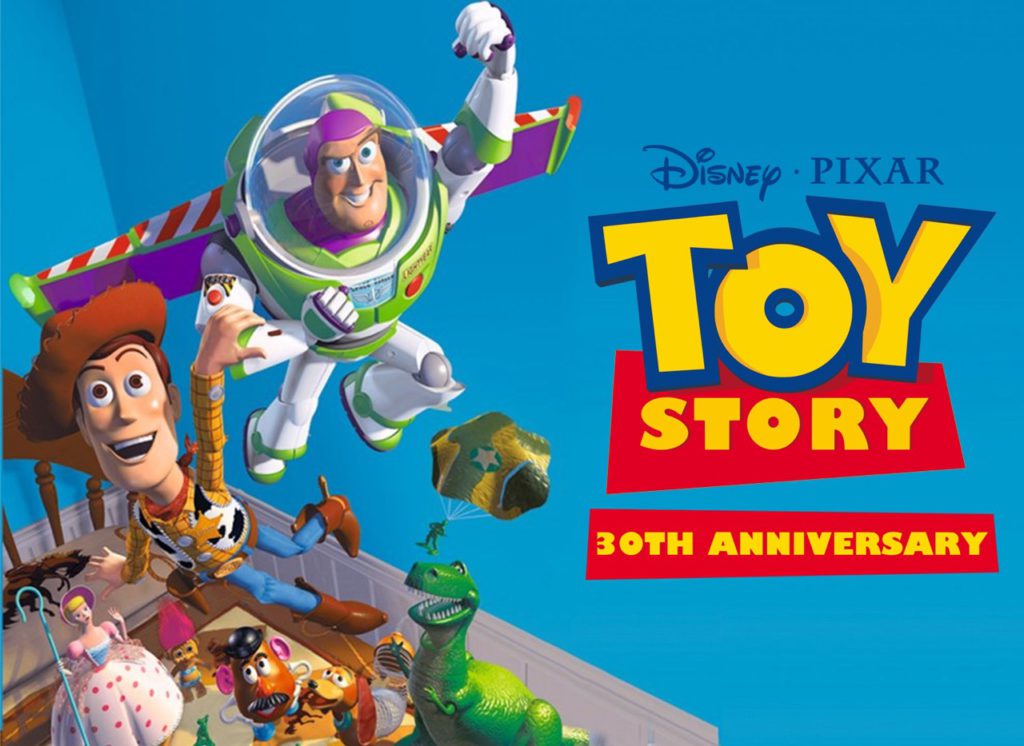Apr 15, 2025
From Toy Story to AI and the Future of Storytelling for Business
In 1995, Pixar Animation Studios disrupted the entire film industry by creating the first CG animated feature film, Toy Story.
While most film critics expected Toy Story to be a financial disaster because “who wants to watch an animated movie created on a computer?” it was loved by audiences all around the world, becoming the highest-grossing movie in 1995. This combination of new technology, stunning art, and great storytelling created a movie masterpiece, now ranked among the 100 best movies of all time.
But Toy Story was controversial at the time. What would happen to traditional animation and live-action films in the age of computers and this new CG technology? Back then, no one knew.
Today, we know that computer animation did not destroy the film industry but ushered in a new golden age of film and TV, enhancing the art, stories, and financial successes.
As one of the original animators on Toy Story, Matthew Luhn isn’t afraid to try out new technology. Along with writing and developing stories at Pixar, The Simpsons, and directing award-winning films for over 30 years, Matthew also advises Fortune 500 companies, business audiences, and even YouTube influencers like Mr. Beast on how to use AI to create impactful stories.
In honor of the 30th anniversary of Toy Story, BigSpeak sat down with Matthew Luhn (well, sat down over Zoom technology, anyway) to chat about how creators are using AI in Hollywood and how businesses can use AI to tell better stories.
From what I understand, you’re not only advising creators like Mr. Beast on how to use AI, but you’re also using these tools to develop your own animated projects. What are you doing with these AI tools?
Yes, I’m currently directing an animated short film, Max and The Mutants, using AI. But I didn’t use AI for everything. For example, I wrote the script myself. My team and I physically storyboarded it. Then we had the character designer from Up, Finding Nemo, and Monsters, Inc. design the characters.
But from there, we’re animating the entire short using AI. It’s exciting to see what AI can do.
What other ways are you using AI in storytelling?
I’m also using AI as a tool, muse, and copilot to help solve story problems on TV shows and movies I’m directing.
For example, when I get stuck on a script or synopsis, I can use AI to help me unlock the story problem so it doesn’t halt my creative process. It’s like having a muse or copilot to help me avoid writer’s block.
This is the same advice I give other creators, like Mr. Beast, when he gets stuck or runs out of ideas when creating new videos on YouTube.
The next time you get stuck on a story or need some inspiration, you can input your characters, scenarios, and locations into an AI software, and like a good editor, it can make suggestions on different ways to fix your story. They may not be the perfect suggestions, but they could give you a few new story nuggets to help you get unstuck and possibly spark a new idea or YouTube video.
I know some people are using AI to generate ideas for storytelling. What can you tell me about that?
Whether it’s an idea for a film, TV show, pitch, or presentation, you can input the information you want, such as the character, plot points, themes, and get a story. But how good the content will be depends on a number of factors: Your understanding of what makes a great story, including your human experience to keep the story original and how to ask the correct prompts.
But AI can be like a slot machine at the casino. Even if you include a good story, a human experience, and the correct prompts, the AI response may not come up as a winning hand, like all cherries. You might get a few cherries but also a few lemons.
So you rewrite the prompt, input it again, and hope for a better outcome. It’s this back and forth where it’s not going to be perfect, but you have to know how to ask the right questions and prompt it to be able to get what you want. It’s trial and error. Just like when I’m writing a story, it takes many, many rewrites to transform a good idea into a great idea.
You mentioned that AI doesn’t always get it right the first time. What are some other limitations of using AI for storytelling?
While everybody has the ability to use AI to create ideas, not all of these ideas will be great. Most of them will be mediocre and generic. Not what you want in entertainment or business. This is where understanding the principles of great storytelling and how to pull from your own personal experiences to make you and your ideas stand out instead of blend in.
I’m already seeing it now.
For example, you can tell AI that you want to write a Hallmark Christmas romantic comedy. You can say it takes place in a folksy middle American town, with an ultra-successful NYC businesswoman home for the holidays, where she accidentally bumps into her old high school sweetheart, who is struggling to keep his small farm from going out of business.
Then you pull down the lever on the AI slot machine, and boom, you’ve got something that actually reads well and makes sense. But it doesn’t feel original. And that’s because AI is pulling from existing content out there and putting together a copy of something we’ve already seen. It’s derivative.
I think stories need to start with a human touch. A story needs to begin with a human experience to make them original and be able to stand out.
You also advise companies on storytelling. What are some of the ways businesses can use AI in their storytelling?
Along with sharing your own experiences and testimonials, AI is a great tool to help you develop metaphors to transform facts and figures into stories that stick. For example, the theme around cybersecurity is “resilience,” and life insurance is “preparation.”
AI can help translate these themes into relatable metaphors to help turn your analytical and potentially dry material into something more relatable, memorable, and impactful.
For example, the theme of “resilience” could be a metaphor around how to not just survive but thrive at parenting, mountain biking, or whatever you would like to add as a prompt.
“Preparation’ can be a metaphor for a miserable family vacation that you didn’t prepare for and how you learned from your mistakes and properly prepared for your next vacation, which was a success.
What do you have to say to people who are worried about AI in storytelling?
The genie is out of the bottle. AI is not going away. We can complain about it, or we can figure out ways to use AI as a tool, muse, or copilot.
I understand that new technology can be scary. From the invention of photography in the mid-1800s to movies in the early 1900s to the first CG animated film, Toy Story, in 1995. But while new technology can be scary, it can also be amazing, empowering anyone, not just the big film studios or Fortune 500 companies, to create movies, TV shows, and new products with smaller budgets using AI. The only things holding us back are our imagination, persistence, and a great story.
If you would like to learn more about storytelling for business, contact BigSpeak Speakers to book Matthew Luhn for your next event.
Or get more Matthew Luhn storytelling tips here:
The Universal Themes Of Storytelling From Inside Out 2 To The Boardroom
How to Use Personal Stories to Create Oscar-Winning Films and Successful Sales Pitches
How to Create Inspiring Stories to Sell Your Business Ideas
Matthew Luhn on the Importance of Visuals in Virtual Storytelling
Speaker

 Matthew Luhn
Matthew Luhn